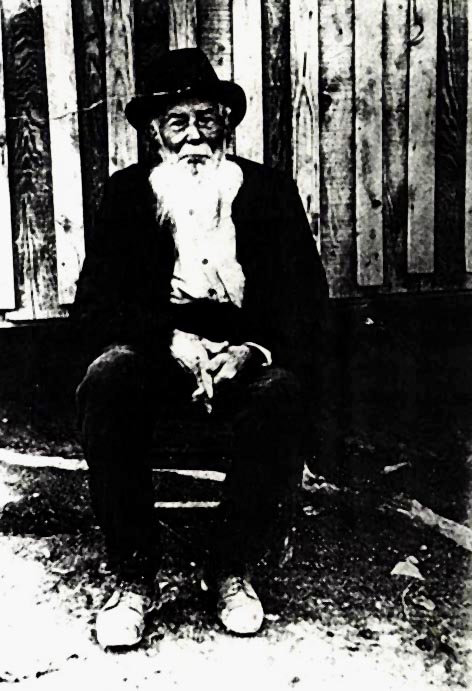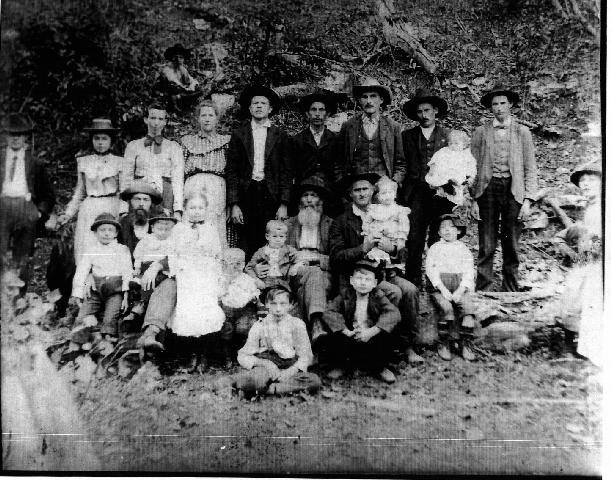


1839 - 1925

A Life Woven in the Hills
Elias Bishop was born in February 1839 in Scott County, Virginia, the son of John Bishop and Rutha James. He came into the world in a time when the mountain roads were still traveled mostly by foot or mule, and a man's word—and work—were all he had. The Bishop family would later put down roots in Kentucky, where Elias would raise a large family, work the land, and live out his days among the hills.
Around 1870, Elias Bishop married a woman named Delilah Babb, though no official marriage record has ever been found. Still, the bond they built together is undeniable—etched not in courthouse ink, but in the lives they raised and the land they worked. Their union likely took root in the foothills of Estill or Powell County, Kentucky, during a time when formal documentation often took a backseat to survival and tradition.
Together, Elias and Delilah raised at least ten children—Ben, John, Creed, Rutha, Rhoda, Lula, William T. ("Bill"), Wilhelm D, and two others whose names have been lost to time. Among them was Rutha, who would later marry Hezekiah Rogers and become the mother of Matt Rogers. Family and faith held their household together through years marked by hard work, homegrown meals, and the kind of strength forged in the heart of Appalachia.
Elias Bishop’s life stretched across the folds of Kentucky—first in Knox County, then later into Estill and Powell Counties, where the soil ran deep with red clay and the trees bent low over winding creeks. He was first recorded in Yellow Creek, Knox County, on the 1860 census, working as an ore miner in his early twenties. That work was dangerous, physically demanding, and all too common for young men of the Appalachian foothills.
But by 1880, Elias had traded mining for something steadier and closer to home: farming. He moved his growing family to Millers Creek in Estill County, where census records list him as a farm laborer. The land wasn’t easy—it rarely is in that part of Kentucky—but it was his. With the help of his sons, he worked it year after year, through planting seasons and droughts, through birth, death, and everything in between.
By 1900, Elias was listed as owning his land—no mortgage. It may have been modest, but it was earned, and it gave his family a measure of independence in an era when many struggled to hold on to even a rented patch. In 1910 and 1920, we find him in Rogers Chapel, Powell County, still listed as a farmer well into his 70s and 80s. His children had grown and gone, but Elias remained rooted—on the land he had worked, where the hills knew his name.
His home sat not far from Furnace and Natural Bridge, in an area that would soon become part of Kentucky’s oil boom. For Elias, the land was more than livelihood—it was legacy. Long before oil companies came calling, he had spent decades sowing and harvesting, surviving lean times and weathering every kind of storm.
This is the land where he buried his children, raised his grandchildren, and likely gathered for quiet dinners and long front-porch talks. It is where he watched the world change, slowly at first—and then all at once.
Elias Bishop passed away at his home in Rogers Chapel, Powell County, Kentucky, on May 14, 1925. He was 86 years old. After a few weeks of illness, he slipped away quietly—leaving behind a legacy built on faith, family, and the land he had worked for decades. His passing marked the end of an era, but not the end of his story.
He was laid to rest on a Saturday afternoon in Wierman Graveyard, surrounded by those who knew and loved him. His daughters—Mrs. Johnnie Pitts and Mrs. Rhoda Barnett—and his sons—Ben, John, and Creed—mourned his loss, along with many grandchildren and extended kin. Though time has claimed many of the names and memories, the roots Elias planted continue to stretch deep into the Kentucky soil.
He did not leave behind riches or renown. What he left was steadier: a good name, an honest life, and a family that would remember him long after the red clay settled around his resting place.

Their faces tell the story of the roots he planted and the strength he passed down.
“He rests now in the land he loved, beneath the trees he once passed by, where the wind still carries his name.”
 Help Us Preserve Our History
Help Us Preserve Our History

family knowledge about individuals mentioned on this page?
We would love to hear from you.
Every name has a story,
and your contribution could help us bring those stories to life.
